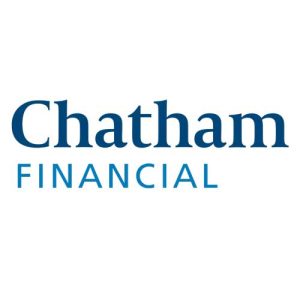2023 was a wild ride. Many banks came under stress after 500 basis points of rate increases. Investors and depositors worried about unrealized losses and withdrew their capital and liquidity, leading to a small number that failed.
Management teams reacted quickly and began hedging their balance sheets. For many banks, maybe yours included, it was the first time using derivatives.
You may be asking yourself, what now? How do I optimize this solution now that I have it? What are best practices?
- Strategic tool vs. last resort. Some bankers employed derivatives because they felt compelled to hedge and are hoping they won’t need to do it again. That mentality misses the strategic tool that derivatives are for balance sheets and customers. Derivatives allow banks to optimize customer requests, investment decisions and funding choices. In some cases, they provide significant cost savings or bring forward future income. In other cases, they allow leadership to meet market demands without taking interest rate risk.
- Hedging vs. trading. Well-meaning brokers may suggest a derivative because it is a good “trade” that may “make” money for the bank but exacerbate its risk to rising or falling rates. The best practice considers derivatives as hedges, not trades — risk management, not investment. In application, this means starting from the balance sheet: what is the risk position? Where is it trending? Would a derivative help change that direction? And lastly, best practice measures the proposed transaction’s impact on earnings in different rate environments before executing.
- Proactive vs. reactionary. Sometimes, when a balance sheet’s risk position is lopsided, management turns to derivatives to bring the balance back. But derivatives are not a silver bullet. They can’t unwind what has already occurred. Instead, the best practice is a proactive approach that considers unlikely outcomes and looks at the opportunities that the market presents in light of what the balance sheet needs. For example, throughout 2023, banks used pay-fixed swaps to ease NIM pressure and to hedge against losses on fixed-income portfolios. The yield curve was inverted (i.e., short-term rates were higher than long-term rates), allowing banks to hedge against rising rates while also receiving income from the swap.
- Consistent vs. sporadic. The best practice is to make derivatives part of every ALCO meeting so that it becomes muscle memory. ALCO should review existing positions and determine whether to leave them in place or unwind early. It means considering derivatives alongside ALCO’s tools, i.e., the bond portfolio, wholesale funding and loan/deposit products. For example, ALCO wants to extend the duration of the balance sheet because it is too asset-sensitive and is concerned about the possibility of falling rates. Using the bond portfolio, running a loan special or using a derivative can all accomplish the same outcome, with derivatives having the added benefit of using less capital and having an immediate impact on the balance sheet.
- Holistic vs. micro and macro. When a bank installs native hedging tools vs. outsourcing to a third party, it opens doors to both the balance sheet and customer hedging. With a holistic hedging program, a bank can hedge at the balance sheet level and introduce customer swaps. Customer swaps offer a means to meet fixed-rate debt requirements without taking rate risk, give the customer a lower all-in rate vs. traditional fixed-rate loans and provide the bank with fee income. And there is no conflict between the balance sheet and customer hedging; the two are complementary. For example, a bank generates $100M of floating-rate loans to customers and offers swaps to those who want a fixed rate. If the balance sheet becomes too asset-sensitive, a swap can be used to hedge the risk of falling rates. In the process, the bank generates fee income, provides the customer with a lower fixed rate and hedges against the unlikely but unfavorable possibility of falling rates.
Hedging interest rate risk with derivatives is an essential tool in every ALCO’s toolkit. Applying these best practices on how and when to use that tool will help management teams optimize their balance sheets.
Ben Lewis is a managing director and global head of sales for Chatham’s Financial Institutions practice. Since joining Chatham, Ben has worked with depositories of all sizes, helping them manage interest rate risk through the prudent use of hedging strategies. Prior to his work with financial institutions, Ben worked with private equity firms and REITs to hedge their interest rate and foreign currency risk.
Before joining Chatham, Ben served eight years in the U.S. Navy as a P-3C Orion Naval Flight Officer, serving in both Operation Enduring Freedom and Operation Iraqi Freedom.
Ben graduated with distinction from the United States Naval Academy with his bachelor’s degree in economics and is a CFA Charterholder.









